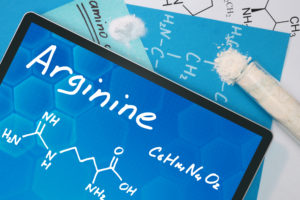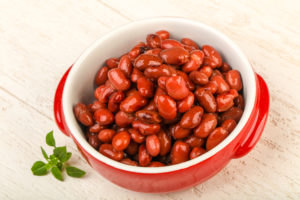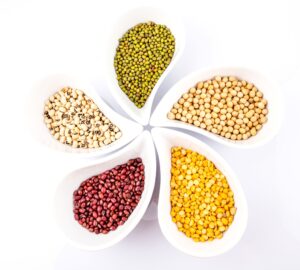Amino acids are the building blocks of protein. For repairing your body including hair, skin, nails and bones, we need protein.
Amino acids combine with nitrogen to form different proteins. They are also the end product of protein digestion.
There are 23 commonly known ones 8 of which are essential aminos. The reason why they are called essential is that they cannot be stored by the body but must be consumed daily in food or supplement form.
Histidine is the 9th essential amino and is required by children and babies.
So that your body can process protein, all the essential amino acids must be present and in the proper ratio to one another. Even the temporary absence of a single amino can affect protein synthesis negatively. If an amino acid is low or missing, it will reduce effectiveness of the others proportionately.
Here is a List of the 23 amino acids starting with the 8 important ones.
- Isoleucine
- Leucine
- Lysine
- Phenylalanine
- Trytophan
- Valine
- Treonine
- Methionine
- Histidine (for babies and young children)
- Alanine
- Arginine
- Asparagine
- Aspartic acid
- Cysteine
- Cystine
- Glutamic acid
- Glutamine
- Glycine
- Ornithine
- Proline
- Serine
- Taurine
- Tyrosine

So how much daily protein do you need?
This depends on your health, age and size. The younger and larger you are the more protein you need.
Have a look at this chart;
Age: 1 to 3 _______ 4 to 6 ______ 7 to 10 ______11 to 14 ______15 to 18 _______19 plus
Pound Key 0.82 ____________0.68 ________ 0.55 _________0.45__________0.42 ___________0.36
This chart is worked out like this:
- Find the pound key under your age group.
- Multiply that number by your weight
- The result will be your daily protein requirement in grams
For example, You weigh 100 pounds and are 33 years: Your pound key is 0.36
0.36 x 100 = Your Daily Protein Requirement
An average minimum protein requirement is around 45g per day. People under stress and with eczema need more daily protein, so it can repair itself. 45g is equal to 15g or approximately 1/2 oz per meal.
Update: Personal trainers and body builders are at the peak of health – They recommend 1g of protein to 1lb of body weight.
For example, if a person weighs 150lbs, they should eat 150g of protein daily. Not all in one go, obviousy!
More like – 30g of protein per meal. You can use apps like MyFitnessPal to track your calories and also amount of protein, carbs and fat in the foods that you eat.
Personally, when I started using this app, I discovered that I had been eating a high carb and fat ratio of nutrients. My protein intake was low and I started wondering why my skin was not repairing fast.
I also started developing wrinkles on my forehead and arms.
Now I include oily fish in my meals. I don’t add oil or salt to my food, but rather season with spices like fenugreek, cardamom, cumin, rosemary and thyme.
I also add flaxseeds to my vegetable juices and smoothies.
3 tablespoons of seeds to 2 litres of vegetable juice that a drink in the morning. 2 cups of juice per 2 hours from 7am – 12 noon.
Two Types of Protein – Complete and Incomplete
The 23 amino acids make up protein that have different functions and work in different areas of the body.
Complete protein provides the balance of 8 necessary amino acids for building tissue. It is found in animal protein, that is meat, poultry, seafood, eggs, milk and cheese.
Incomplete protein lacks essential amino acids and is not used sufficiently when eaten by itself. However, when combined with small amounts of animal protein it becomes complete. It is found in nuts, seeds, peas, grains and beans.

Wheatgrass juice also contains protein tat is easily digested and tones the skin. It contains all 8 amino acids.
Mixing rice and beans with some yoghurt can be less expensive, yet more nourishing than a fat steak.
Remember this;
- 1 g of protein = 4 calories
- 1 g of carbs = 4 calories
- 1 g of fat = 9 calories
Supplements
If you see an older person with a wrinkled face it means their body is crying out for protein. Once they eat their required daily quota, their face becomes youthful and full once more. Protein supplements are useful and can be derived from soya beans and also nut and seed milks. Supplements normally contain 26g per ounce and can be added to smoothie and vegetable juices.
Amino Acid Supplements
These need Vitamins B6, B12 and Niacin to metabolize and become the body’s protein.
Always make sure the amino acid formula of the supplement is well balanced. This means that the essential aminos are in the current ratio to non-essential fatty acids.
Also, the essentials need to be in the proper proportion to one another.
Lysine = 2:1 ratio to methionine, 3:1 to trytophan and so on. Find a reliable nutritionist who will explain this better to you.
The amino acid supplement formula must be like naturally occurring proteins so you can absorb the correct therapeutic value.
N.B. Never megadose or use supplements in place of food.
I would like to recommend you read Earl Mindell’s New Vitamin Bible. I used excerpts from his book to inform you about one of the nutritional components you need to ensure your body works at full capacity.
Earl’s book was the first book on nutrition that I invested in and am living proof that his information is correct and timelessly up-to-date.
If you would like to comment about this article, or ask a question, please leave it here and I will be happy to help you out.
